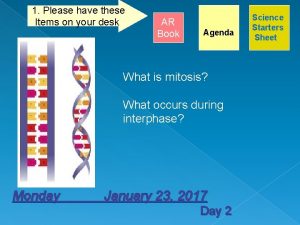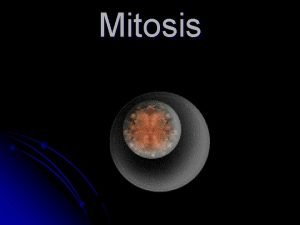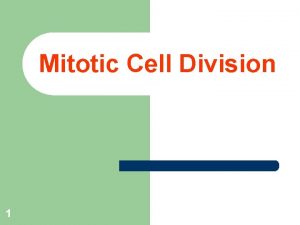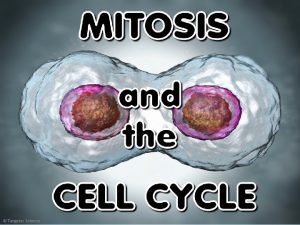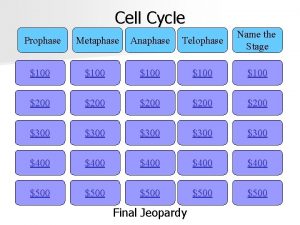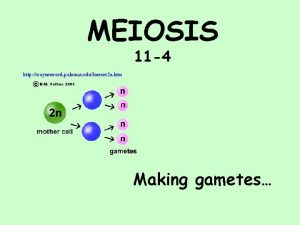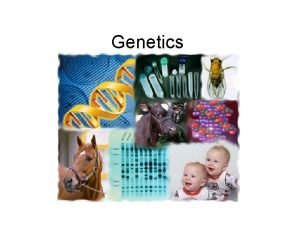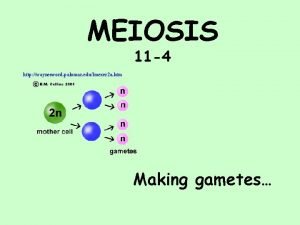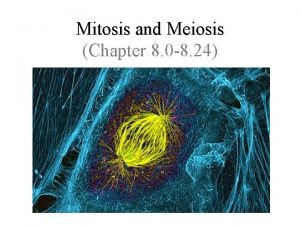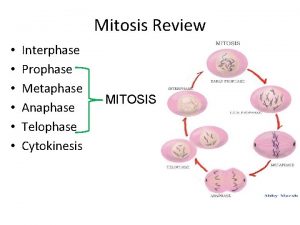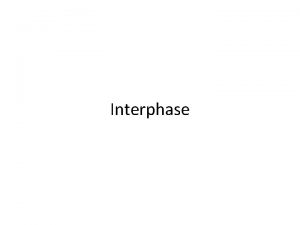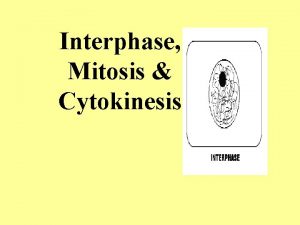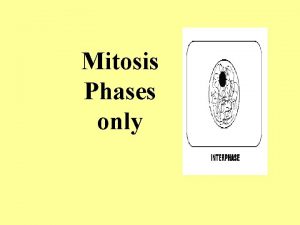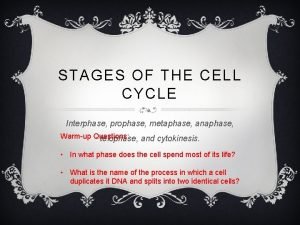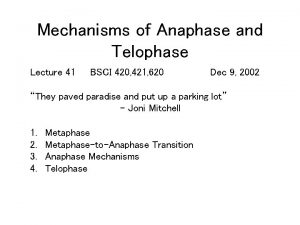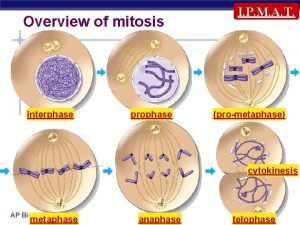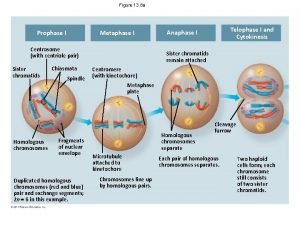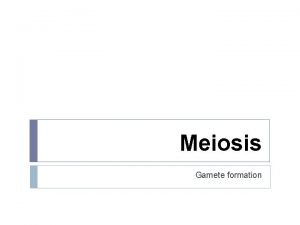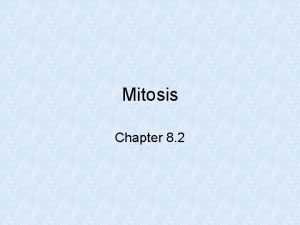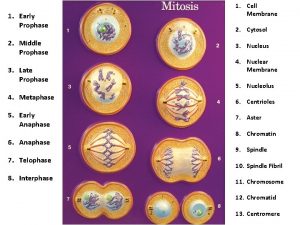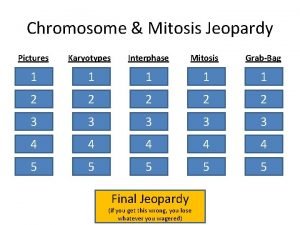Interphase Mitosis Prophase Metaphase Anaphase Telophase This is

















- Slides: 17

• • • Interphase Mitosis: Prophase Metaphase Anaphase Telophase


This is metaphase ^_^

This is anaphase ^_*

Also this is anaphase

ﻟﺠﻨﺔ ﺍﻟﺼﻴﺪﻟﻪ ﺭﺍﻳﺔ ﻟﻠﺨﻴﺮ ﻭﻓﺎﺭﺱ ﻟﻦ ﻳﺘﺮﺟﻞ • • • Surface Epithelium Simple: Squamous Cuboidal Columnar Stratified: Squamous non-keratinized Squamous keratinized Pseudostratified columnar Transitional

ﺑﺎﻻﻧﺴﺠﻪ ﺍﻟﻴﻜﻢ ﺗﻠﺨﻴﺺ ﺑﺴﻴﻂ ﻗﺒﻞ ﻣﺎ ﻧﺒﺪﺃ ﻋﻨﻬﺎ ﻭﻛﻴﻔﻴﺔ ﻣﻌﺮﻓﺘﻬﺎ • Cells in epithelium are very densely packed together like bricks in a wall, leaving very little intercellular space. The cells can form continuous sheets which are attached to each other at many locations by adherens junctions, tight junctions and desmosomes. [4] • Basement membrane • All epithelial cells rest on a basement membrane, which acts as a scaffolding on which epithelium can grow and regenerate after injuries. [5] Epithelial tissue is innervated, but avascular. This epithelial tissue must be nourished by substances diffusing from the blood vessels in the underlying tissue, but they don't have their own blood supply. The basement membrane acts as a selectively permeable membrane that determines which substances will be able to enter the epithelium

• • Classification Types of epithelium Tissues are generally classified by the morphology of their cells, and the number of layers they are composed of. [2][4][6] Epithelial tissue that is only one cell thick is known as simple epithelium. [7] If it is two or more cells thick, it is known as stratified epithelium. [8] However, when taller simple epithelial cells (see columnar, below) are viewed in cross section with several nuclei appearing at different heights, they can be confused with stratified epithelia. This kind of epithelium is therefore described as "pseudostratified" epithelium. [9] There are three principal morphologies associated with epithelial cells. Squamous epithelium has cells which are wider than they are tall (flat and scale-like). Cuboidal epithelium has cells whose height and width are approximately the same (cube shaped). Columnar epithelium has cells taller than they are wide (column shaped). In addition, the morphology of the cells in transitional epithelium may vary from squamous to cuboidal, depending on the amount of tension on the epithelium

Simple Squamous Epithelium: single layer of flat cells (LAB origin Kidney cortex (renal corpuscle))


Simple columnar epithelium

Simple cuboidal epithelium

Stratified squamous epithelial tissue

Stratified squamous epithelium, keratinized Present in thick skin

Pseudostratified columnar epithelium, ciliated with goblet cells= Respiratory epithelium

Transitional epithelium= urothelium, stretched and relaxed forms

Transitional epithelium= urothelium, stretched and relaxed forms. A
 Prophase metaphase anaphase telophase
Prophase metaphase anaphase telophase Prophase metaphase anaphase telophase
Prophase metaphase anaphase telophase Label the following pictures
Label the following pictures Prophase, metaphase, anaphase, telophase
Prophase, metaphase, anaphase, telophase Prophase metaphase anaphase telophase
Prophase metaphase anaphase telophase Purpose of meiosis
Purpose of meiosis Prophase metaphase anaphase telophase
Prophase metaphase anaphase telophase Telophase
Telophase Telophase
Telophase Meosis vs mitosis
Meosis vs mitosis Label anaphase
Label anaphase Daughter cell
Daughter cell Metaphase 2
Metaphase 2 Telophase 1 and telophase 2
Telophase 1 and telophase 2 Metaphase of mitosis
Metaphase of mitosis Metaphase
Metaphase Interphase
Interphase Non disjunction in meiosis 1 and 2
Non disjunction in meiosis 1 and 2



